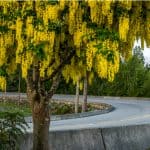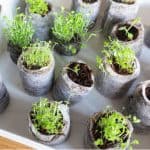Last updated on May 18th, 2022
Our site is reader supported, this means we may earn a small commission from Amazon and other affiliates when you buy through links on our site.
Osteospermum is a very colourful flowering plant that is perfect for border gardens or patios. These plants are usually planted as summer bedding plants in the UK, although you can get some hardy perennial varieties most people plant the summer bedding varieties. The flowers themselves take on a daisy-like shape and are incredibly colourful with contrasting centres. You can enjoy these blooms from the end of spring all the way through to the first frost if they are deadheaded regularly. Osteospermum is very easy to grow, and even easier to propagate from cuttings, and some varieties can also be grown from seed.
Given the size they grow to, they are suitable for the front or middle of a colourful border garden, depending on what else you have. Many gardeners plant them as an effective groundcover too. However, they are half-hardy generally and given that they are not really classed as hardy, they need to be planted outdoors when the risk of frost has passed, for most parts of the UK this is usually around May.
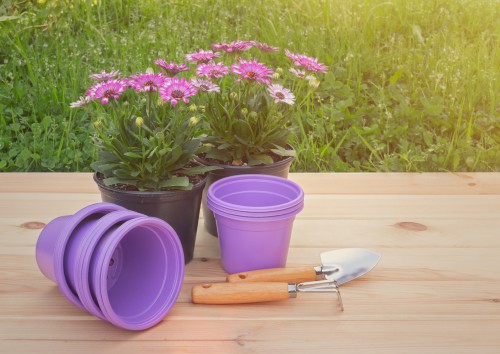
Planting Osteospermum – plant them out in May
The best time of the year to plant your Osteospermum is May after all likelihood of frost has gone. They can usually handle a light frost but should they get caught out with a late frost they won’t survive, meaning you will miss out on a season of their stunning flowers.
Use a good quality multi-purpose compost
If you have purchased your Osteospermum from your local nursery or garden centre you want to plant them in your garden or in a container as soon as possible. Make sure you dig a hole that is twice the size of the root ball width and then make the plant level with the soil so that it’s at the same depth that was in its supplied container. Compost wise they like fertile soil but aren’t too fussy, a good quality multi-purpose compost is perfect.
You can see our recommended multi-purpose compost in our guide here.
If you are planting an Osteospermum you have grown from a cutting, we recommend pinching out the tops to encourage them to become bushier plants and growing them in 9cm pots before planting them outdoors permanently to ensure they have a good root system.
Learn how to take a cutting in this guide here
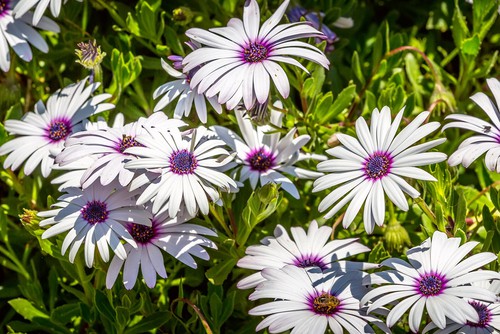
Caring for Osteospermum
Plant them in a sunny position
These are very easy plants to care for and they will spread quickly giving you the perfect groundcover if you so choose. They prefer to be in a sunny position because they are flowering plants, and, as is the case with most flowering plants, full sun will give them the best floriferous qualities. However, they will tolerate partial shade in exchange for fewer flowers but they really do produce the best show in full sun.
Plant in moderately fertile well-drained soil
In terms of soil, you need to make sure you have free-draining soil. If you are putting them in containers make sure you have a lot of drainage holes at the bottom because the last thing you want is for them to get waterlogged. Most plastic containers can be easily drilled at the bottom to add more drainage should this be necessary. If you have very heavy soil in your garden you can always add things like grit or compost to try and loosen it up, bulk it out a little and break the soil up.
Water regularly until they are well rooted
They tolerate dry conditions quite well once they are established but you do need to water them for the first few weeks after you plant them until they are well rooted and then subsequently once per week during warm periods, or when the first couple of inches of soil becomes dry.
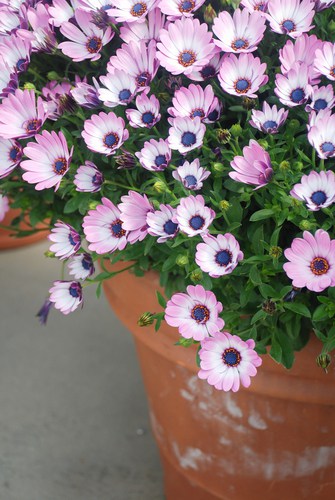
Water regularly when grown in containers
If you are growing them in pots and containers be sure to water them regularly enough that they never completely dry out. If they completely dry out, whether you have planted them in containers or in the ground it can cause the buds to fall or not open.
Feeding
During the growing season, as with most summer plants, you can promote flowering by feeding every 2 weeks. This is particularly important if you have planted your Osteospermum in containers.
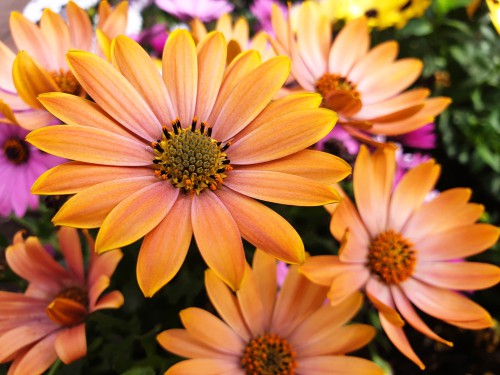
Deadhead them regularly to prolong the flowering period
Other than deadheading the plants regularly to prolong flowering and cutting back any dead stems, there is next to no maintenance required. If you have grown your Osteospermum in a pot, once the root ball gets a little congested you’ll have to repot them in something that’s slightly larger and, again, has adequate drainage holes.
Hardy varieties
If you are planting one of the few hardier varieties you can cut it back to about 10cm in height at the beginning of spring, right before any new growth manifests. Removing the old foliage in this fashion will encourage the plant to focus on new development.
Read next: Are Osteospermums perennials? And how to overwinter them
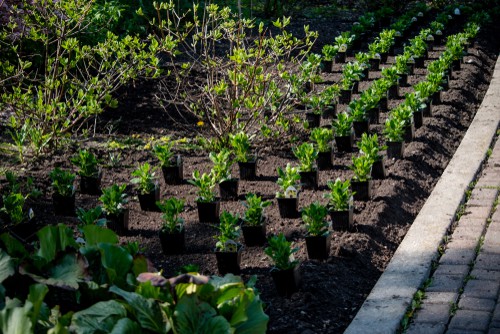
Propagating
Most Osteospermum plants are actually hybrids so you can’t propagate them well from seed. If you don’t have any preference for the variety of Osteospermum you have, and what colours you get, you can simply scatter the seeds from your existing plants on top of a seed tray, place them in a light warm place to germinate and then prick them out into small 9cm pots and grow them on.
However, for most varieties, growing from seed is not as reliable as taking cuttings from a plant, especially if you want to propagate the same plant to receive the same colours.
Taking cuttings
Taking cuttings will help the semi-hardy varieties to propagate more effectively during the winter. This is a process you want to start at the end of summer or the beginning of autumn. The cuttings should be grown in module trays, 7cm square pots or 9cm round pots.
Step 1
The same as when taking most cuttings, you should cut a non-flowering shoot from your Osteospermum that is around 5cm in length.
Step 2
Remove all of the lower leaves, dip the base of the stem into rooting hormone powder, and place them in the pots or plug trays.
Step 3
You can place them on a windowsill that’s out of direct sunlight, in a propagator, or in a heated greenhouse. Much the same as any other plant, make sure they don’t dry out but at the same time, you need to avoid overwatering them. Grow them over winter before planting out in spring when the risk of frost has passed.
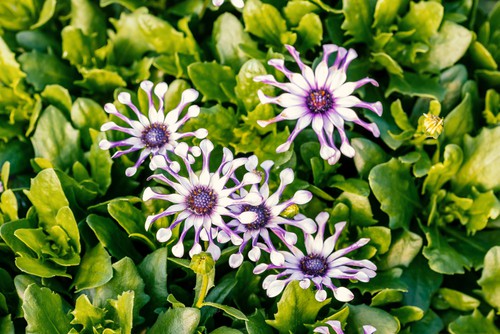
Pests and Problems
These are generally easy plants in terms of pests and diseases but they can be attacked by aphids. Aphids will cause the leaves to curl and yellow and if left untreated eventually the stems will die off.
Aphids
It’s important to remove the aphids as soon as you see them, either by pinching them off, spraying them away with a strong jet of water or spraying the plant with a soap solution. You can also introduce beneficial predators like ladybirds, and believe it or not, you can actually buy these online. If the problem is particularly bad you can spray with a pesticide bug killer.
Powdery Mildew
In terms of diseases, powdery mildew is all that you really have to look out for. If you noticed white powdery patches of mildew on the leaves, especially during hot weather when there isn’t enough air circulation, you can remove any weeds around the area, avoid overwatering, remove the affected leaves, and increase air circulation to try and help prevent it. You can also consider spraying with a fungicide if your plants are badly affected.

